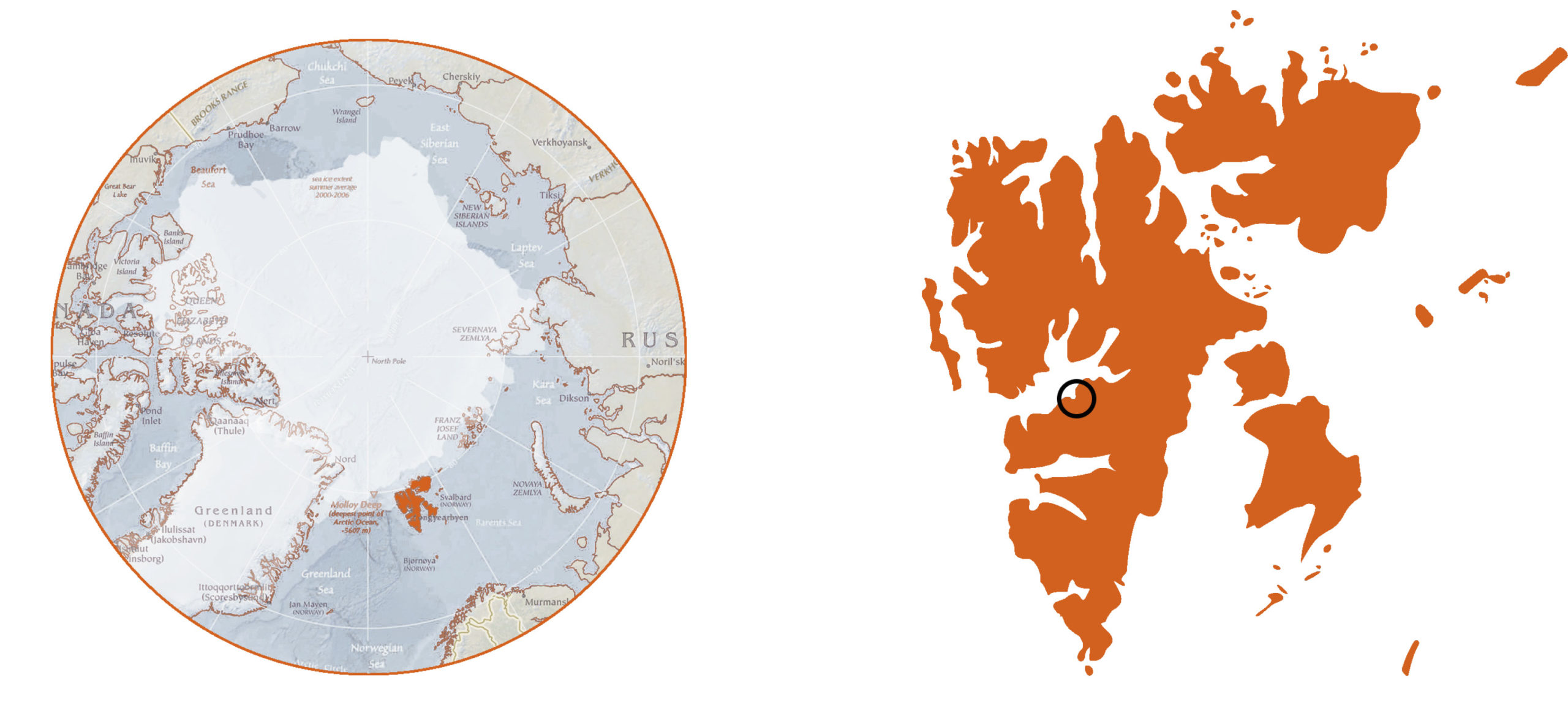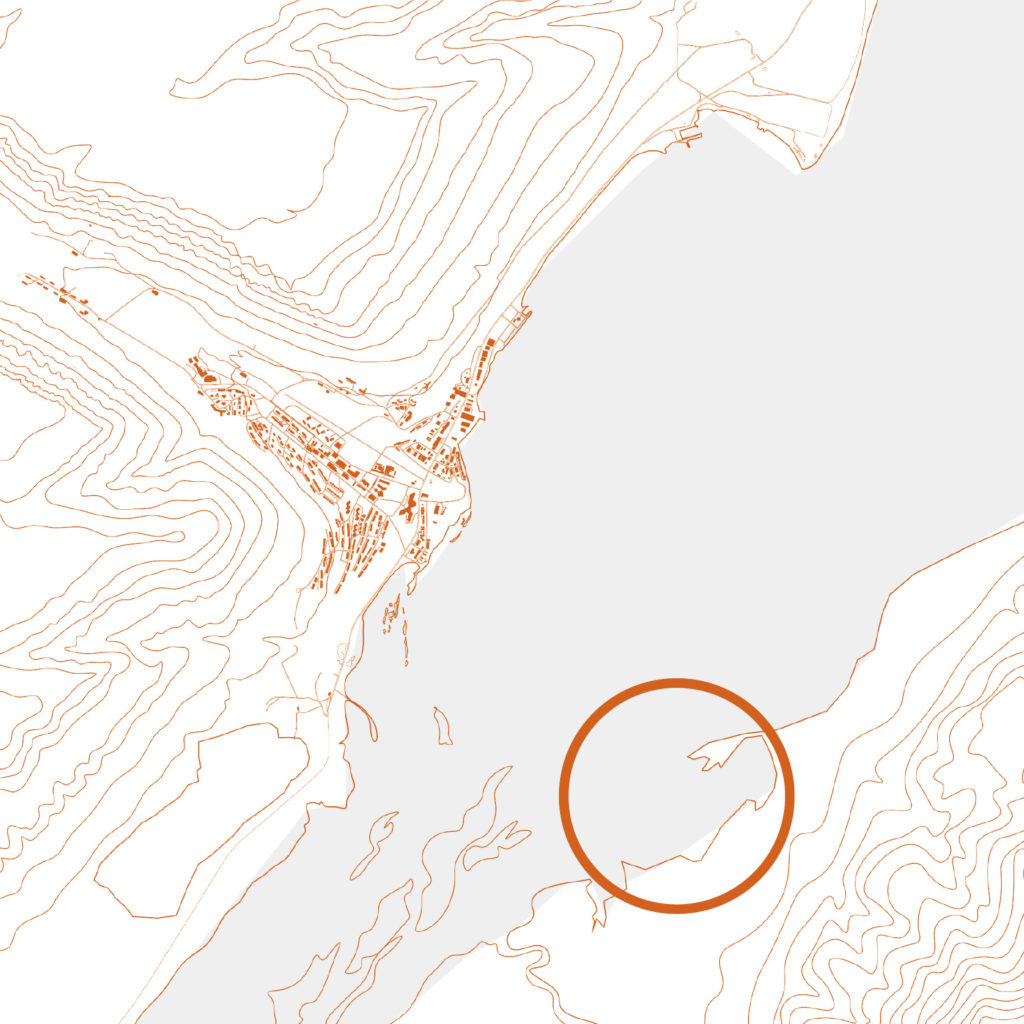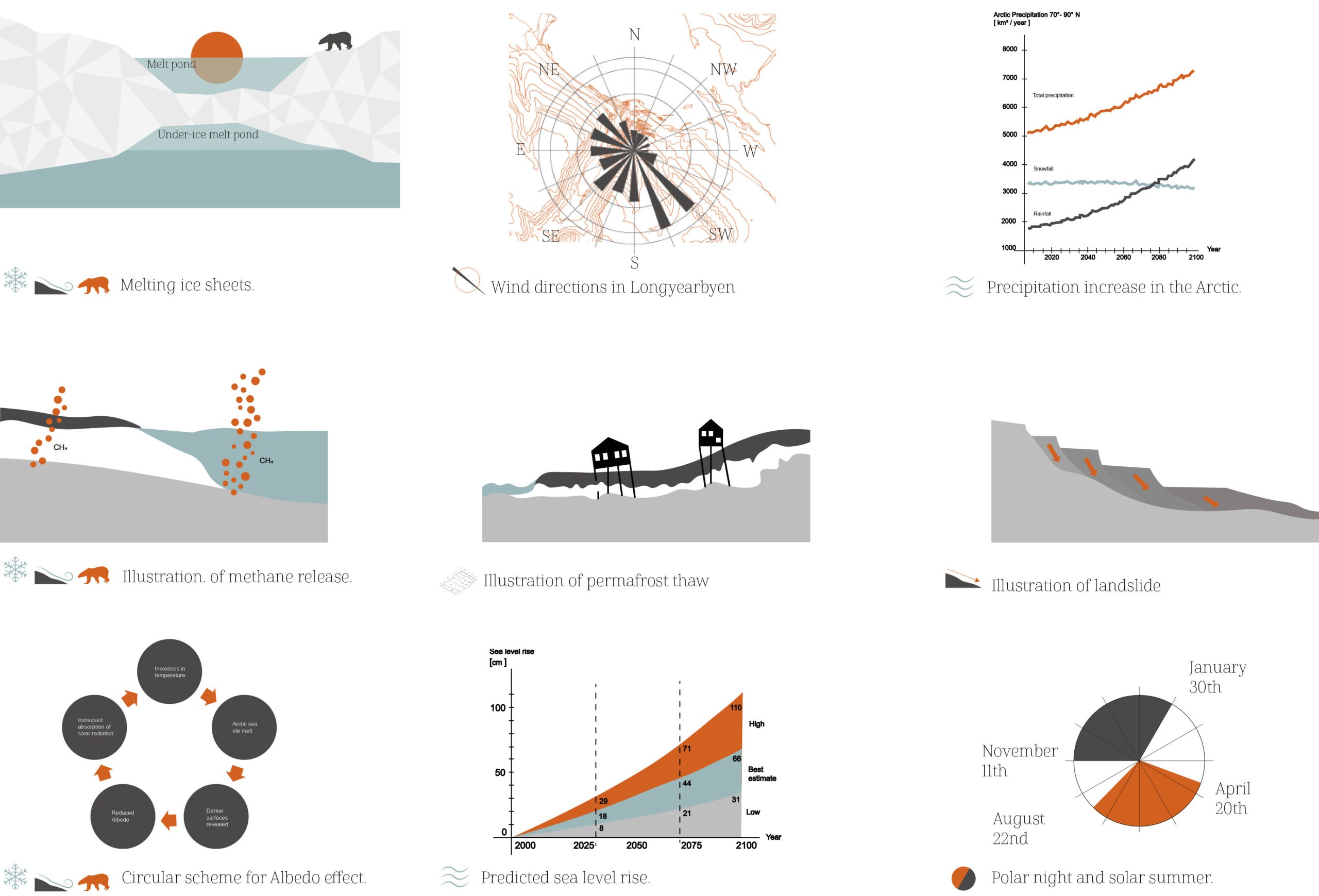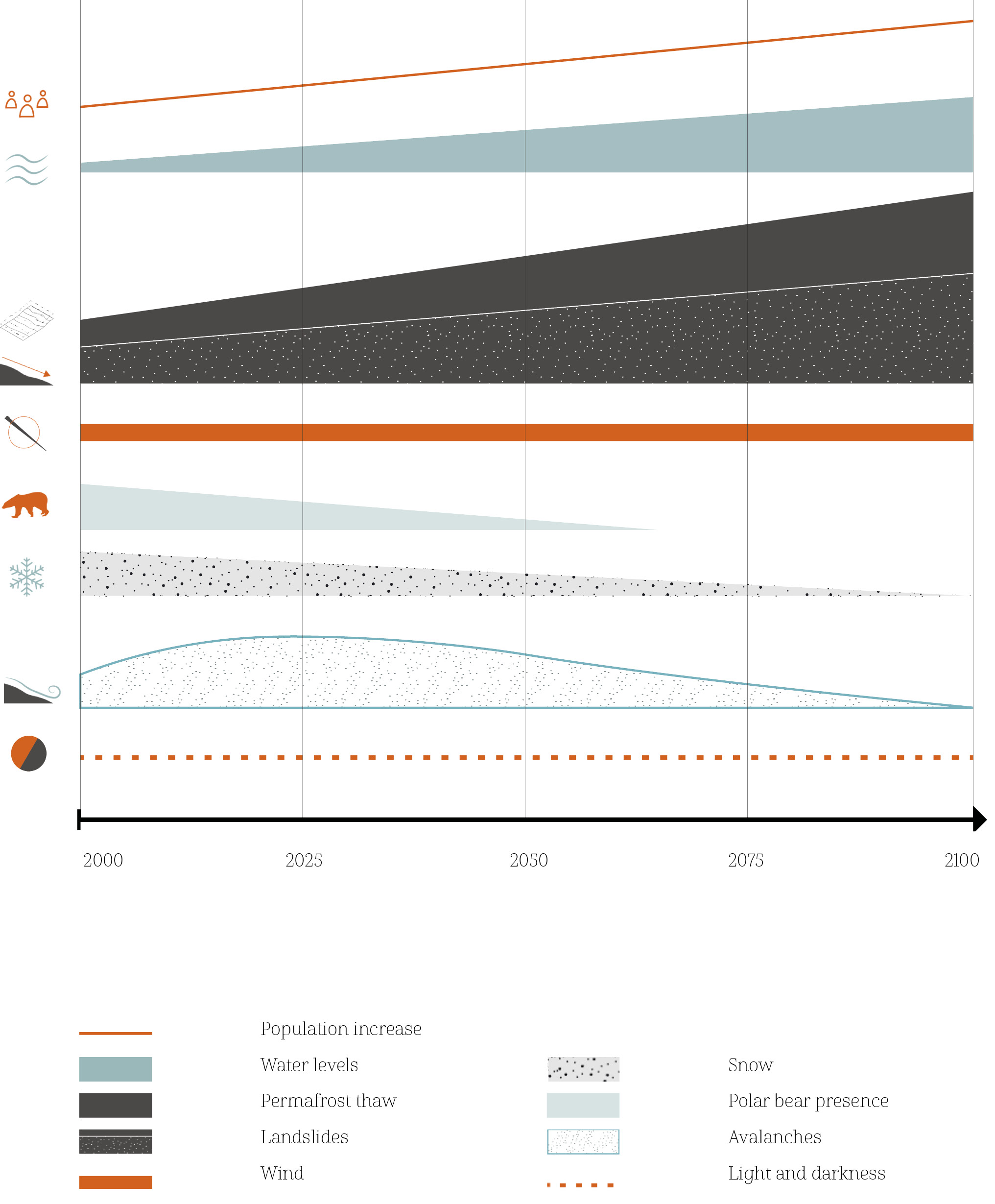
Svalbard and Longyearbyen
The islands of Svalbard range from 74° to 81° north latitude, making them some of the northernmost parts of dry land on Earth. Humans encountered the islands in the late 16th century as the dutch William Barentsz sighted the coastline of the rugged islands. In the 17th and 18th centuries, Svalbard was used as a base for whale hunters but was then abandoned and not revisited until the late 18th century where several mineral and coal findings were done. This imposed several permanent communities to be established to serve the mining companies.
Longyearbyen, Svalbard is the largest town on the island group and one of the northernmost civilisations in the world. Longyearbyen was established as a coal mining town in the late 19th century and has been moved as new mines were set along the coast. The town is inhabited by roughly 2100 people and has changed from its original role as a mining town into a community which focuses on research and tourism.
Svalbard holds a grant named The Svalbard Treaty which allows anyone to settle down and work without a visa. This has resulted in a great variety of nationalities staying in Longyearbyen.The population of Longearybyen is increasing, the current location is put under stress due to the ground conditions of the site, and the geographical position between mountains and a glacier makes it difficult to expand from its current location.

The site
On the opposite side of Longyearbyen, in the northern shore of Adventfiorden, lies an abandoned old mining settlement with the name Hiorthamn, previously known as Moskushamn. The settlement was founded in 1917 and held establishments for warehouses, a sawmill, a smithy, kitchen facilities, accommodations, offices and a series of mining facilities including a small road and rail system. (Riksantikvaren, Year unknown). There are still traces of the settlement visible in the landscape today.
The location for the proposed project is in the perimeter of the old settlement. The Northern shore of Adventfiorden gets a noteworthy amount of sunlight in the spring and summer due to its South facing position. The terrain in this area is flatter and more suitable for the human scale than the surrounding steep mountain faces that meet the water. The proximity to the old historical landmarks gives reason to the historical context of the development of Longyearbyen. Connections to Longyearbyen are made through the use of the fiord, with boat transportation routes in the summer and snowmobile usage in the winter, as well as a road system over the delta in the valley.
The situation is advantageous also for future planning of development for Longyearbyen regarding positioning of industry. The current proposal from Longyearbyen city council suggests a move of all industry to Hotellneset, on the southwest side of Adventfiorden. The name of the new location is suggested to be Nye Hiorthamn.
Special site conditions
Longyearbyen is situated between two mountains and a glacier. Thus, it is difficult for the city to expand from its current location.
The ground conditions in and around the city are unstable, and the active layer of permafrost is incessantly under change due to the varying seasons. These circumstances are important for how houses are built. Houses must be raised on stilts in order to withstand the fluctuations of the ground underneath.
Due to the climate and the far North position, plant life only can exist under marginal conditions on Svalbard. Only low growing vegetation exists, and as a result, trees are not growing in Longyearbyen or anywhere on the island group.
The position of Longyearbyen on 78° north latitude implies that the rules of day and night do not apply in the same manner as they do in the south. For almost four months every year, no light is provided by the sun in Longyearbyen. The sky is during that period only lit by stars, the moon and the aurora borealis. In contradistinction, the summer period is instead fully illuminated by the midnight sun.
The above-mentioned conditions are the most profound for this exceptional place in the North. They are therefore needed to be taken into consideration in this thesis.

Climate Change in the Arctic
Future predictions suggest that Svalbard will face warmer temperatures and more rainfall. According to the Norweigan Meteorological Institute, in the report Climate in Svalbard 2100, the annual temperature can increase from minus 5,9 degrees Celsius to 3,3 degrees Celsius by the year 2100. Precipitation will then have increased with 40 per cent, with much less snowfall than today.

Climate Scenario

Development over Time
